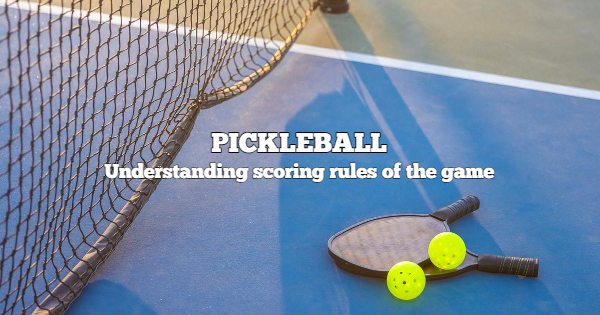Introduction
Pickleball, often dubbed the fastest-growing sport in America, is a captivating fusion of tennis, badminton, and table tennis. Beyond its easy-to-learn nature and appeal to players of all ages, pickleball stands out for its unique scoring system, contributing significantly to the game’s excitement. In this comprehensive guide, we’ll unravel the intricacies of pickleball scoring rules, empowering players to navigate the court with confidence and finesse.
The Essence of Pickleball Scoring
Before delving into the specifics, let’s grasp the fundamental structure of pickleball scoring. Played on a rectangular court, the game involves two teams, each comprising two players. The primary objective is to score points through strategic serves, returns, and volleys, with the ultimate goal of outscoring the opposing team.

- Game Points: In pickleball, the game is typically played to 11 points. However, variations exist, especially in professional and tournament settings, where games might extend to 15 or 21 points. The first team to reach the designated point threshold wins the game.
- Winning Margin: Securing a victory in pickleball requires more than just reaching the specified point total. To win a game, a team must establish a lead of at least two points over their opponents. This ensures that the victory is not only earned but secured with a clear advantage.
Serving Rotation
One of the distinctive features of pickleball is the serving rotation. Unlike other racquet sports, only the serving team can score points. The team that wins a rally earns the right to serve for the next point. After each point is scored, both teams must rotate sides, and the player in the right-hand court takes on the serving responsibilities.
ALSO SEE: List of the top online sports betting websites
Faults and Side-Outs
Faults play a crucial role in pickleball, acting as penalties for rule violations. Understanding common fault scenarios is pivotal for players striving for precision and mastery in their gameplay.
- Out-of-Bounds: Hitting the ball beyond the court boundaries results in a fault, and the opposing team is awarded a point. Players must maintain accuracy and control to keep the ball in play.
- Double Bounce: Pickleball mandates that the ball must bounce once on each side before players can engage in volleying. If a team fails to abide by this rule and hits the ball before it bounces, it results in a fault.
- Non-Volley Zone (Kitchen) Violation: The non-volley zone, often referred to as the kitchen, is the area near the net. Players are not allowed to volley the ball while standing inside the kitchen, except when the ball bounces there. Violating this rule incurs a fault.
- Faulty Serve: Serves must be executed within the service area diagonally across the court. Failure to do so results in a fault, and the serving team loses the opportunity to score on that particular serve.
- Double Hit: Hitting the ball twice consecutively is considered a fault. Players must focus on clean and controlled hits to avoid penalties.
Scoring in Doubles and Singles
Pickleball accommodates both doubles and singles play, each with its own set of scoring nuances.
- Doubles Scoring: In pickleball doubles play, each team consists of two players. Both players on a team take turns serving, ensuring that each player has an opportunity to contribute to the game. The serving team rotates sides after scoring a point, with the player in the right-hand court initiating the serve.
- Singles Scoring: Singles play involves one player on each side of the court. The serving player serves from the right-hand court when their score is even and from the left-hand court when it’s odd. The receiver positions themselves accordingly. Importantly, the serving player scores points regardless of who served.
Additional Nuances
Doubles Play: In doubles, the serving team only scores points when they are serving. Both players on a team get the chance to serve before the serve is passed to the opposing team.
Singles Play: With only one player on each side, the serving player scores points regardless of who served. The dynamics of strategy and court positioning become even more critical in singles play.
Conclusion: Mastering the Scoreboard and the Game
Pickleball’s scoring rules may appear intricate initially, but they are fundamental to the flow and strategy of the game. Whether you’re a beginner or a seasoned player, understanding these rules enhances your overall pickleball experience. The game’s social and inclusive nature, coupled with its engaging scoring system, makes it a favorite among players of all ages.
So, next time you step onto the pickleball court, armed with your paddle and enthusiasm, remember the scoring rules that add layers of excitement and strategy to each rally. The journey to mastering pickleball is not just about hitting the ball – it’s about understanding the ebb and flow of points, the nuances of serving, and the thrill of securing that winning margin.
Get ready to elevate your pickleball game by mastering the scoreboard and embracing the exhilarating world of pickleball scoring. And for similar sports news and updates from around the world, stay tuned to ReadScoops.com!
Register on Fun88 and get a 200 FREE Bet for sports betting




